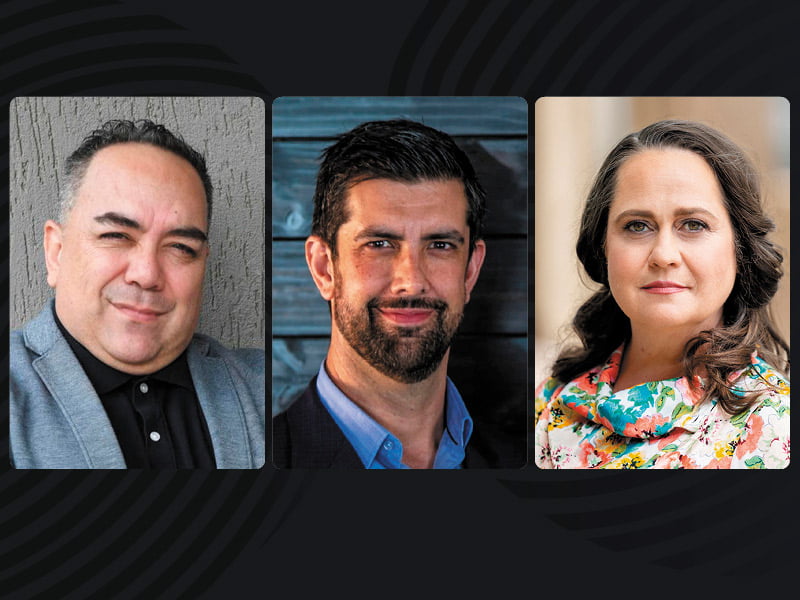Inbound legislation on digital identity is poised to change the fabric of Australian society, but not without raising complex questions about human inclusion, particularly for First Nations and under-documented communities.
A future where every Australian can access essential services with a swipe of a digital ID may be convenient, but will it be fair?
For instance, digital identity systems largely fail to recognise the cultural significance of multiple names in Indigenous communities.
These names hold deep, sacred meanings and are vital to their identity but likely exceed the space allotment in traditional digital form fields.
This oversight creates a disconnect, as digital systems need to fully understand and respect these essential aspects of Indigenous identity.
“Digital IDs must be more flexible and culturally sensitive, ensuring they honour and accommodate the unique naming traditions of First Nation people,” Hold Access founder Jason-UrranndullaDavis said in the latest episode of the Identity Matters: Digital Identity and the Evolution of the Internet vodcast series, hosted by InnovationAus.com in partnership with Ping Identity.
Many indigenous communities face a cycle of dependency that keeps people from fully controlling their own lives. This loop is hard to break and often stems from deeper, systemic issues evolving over the last two centuries.
“Due to a lack of adequately verified identity, First Nations individuals often can’t access essential banking services,” continued Mr Davis. “This violates banking codes and has resulted in millions of dollars in fines and criminal convictions for non-compliance.”
The issue demonstrates how the current system fails to provide First Nations people with the same privileges and opportunities, contributing to their continued dependency and marginalisation.
New digital identity exchanges like ConnectID suggest we’re reaching a point where more flexible, user-directed identity verification systems are possible, especially in banking.
“We’re still figuring out a single digital identity, but things are coming together as platforms unite. This shows how digital identity is evolving to become more accessible and inclusive,” Ping Identity’s VP of Sales for APAC & Japan, Ashley Diffey, explained during the podcast.
According to Mr Davis, roughly 90 per cent of unemployed Indigenous Australians face barriers to accessing emails, electronic documents, and digital identity.
He argues that digital self-determination could correct these inequities and lead to holistic inclusion across all essential services.
He pointed out subtle and nuanced challenges around cultural differences that impact the lives of indigenous people, including Elders.
“They sometimes have to wait hours at Centrelink,” said Mr Davis. “They don’t get the same privileges or opportunities as they might in their own regional communities despite their high regard and leadership roles within their communities.”
In a well-implemented digital identity system, individuals can quickly and securely verify their identity without requiring extensive paperwork or in-person visits.
This means that Elders and family groups can access essential services more quickly and efficiently, reducing waiting time at places like Centrelink.

Mr Diffey acknowledged the importance of addressing what needs to be fixed for individuals in the digital identity landscape.
“We know what works we can build for those 80 per cent of the cases and often more complex situations,” he said, “but need more exposure to the use cases and solutions that Jason is sharing with us today.”
Mr Davis emphasises the ancient message stick as a powerful solution to digital identity challenges.
“For 60,000 years… we’ve actually had the solution all along in Australia. The message stick, used by Indigenous Australian communities for centuries, is a verifiable tool representing trust and authority,” he said.
It allowed diverse tribes and nations in Australia to coexist harmoniously with unique languages and customs.
Hold Access, the company he founded to help First Nations and documented people with data sovereignty, digitised this concept, providing an inclusive means for people from diverse backgrounds to navigate identification barriers.
These holistic platforms aim to augment cultural integrity and reduce unconscious biases.
Mr Diffey agreed that inbound legislation needs to reflect a similar holistic approach and be ratified as quickly as possible.
“Digital ID, as a multifaceted authentication, authorisation, and security mechanism, can serve as a crucial connective tissue, allowing culturally diverse platforms to seamlessly integrate with exchanges like ConnectID,” he said.
In both theory and practice, this approach strives to establish a versatile, user-centric system for identity verification, empowering individuals with control and choices in how they authenticate their identities.
The Identity Matters: Digital Identity and the Evolution of the Internet podcast series and accompanying articles are produced by InnovationAus.com in partnership with Ping Identity.
Do you know more? Contact James Riley via Email.

Its still being figured out because the “user” data model is fundamentally at odds and opposes “inclusion”.
Licenses/Passports/Identification cannot be equated to logins/authentication/users.
It is not technically possible to enforce “single digital identity” in any systems design even if you attempt to build existing systems from the ground up, the data model is not possible. We use email addresses as usernames today for this very reason.